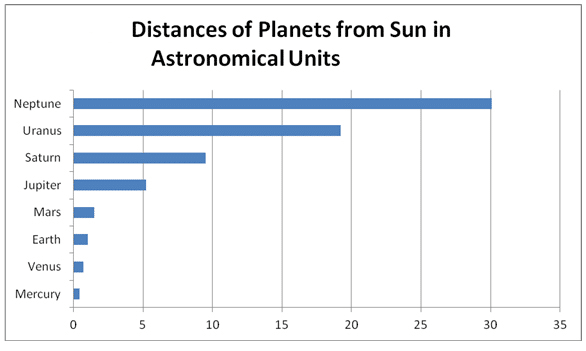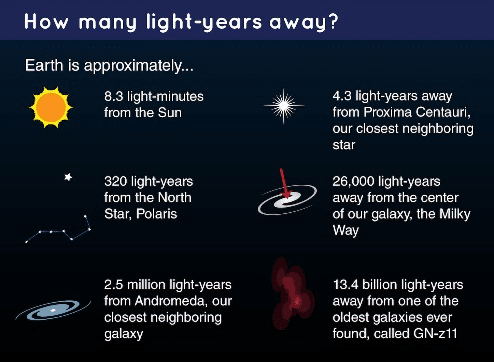The Dynamics Of Our Solar System
Grade 8 Science Worksheets
How did the Solar System form?
All stars are created out of huge clouds of dust and gas in space. The forces of gravity pull these gas and dust particles together over millions of years to form a tightly-knit star. Gravity continues to act until it’s a thick dense ball with all the gas squeezed out. The squeezing action makes the object very hot and it begins to glow. That’s how a star is born!
Our sun, earth, all the planets, and all other objects of our solar system were formed in exactly the same manner – one giant cloud of gas and dust called an interstellar cloud, which settled down to create these objects. Our solar system is estimated to be about 4.6 billion years old and the entire process of stellar creation took about 100 million years!
We call this the Nebular Theory (nebula is the Latin word for ‘cloud’).
Measuring interstellar distances
Our nearest neighbor in the skies is the moon. Not near enough! It is 238,900 miles away. If you drove all across the United States from New York to San Diego you’d travel about 2,800 miles. The moon is 85 times further away than that! To get to the moon at the same speed as your car would take you nearly 6 months! (That’s why we built rockets to get there faster).
Heavenly Distances
All objects in the universe are ‘astronomically’ distanced from one another. The sun is 93 million miles away from the earth on average. Most of the faraway planets such as Jupiter or Saturn are even further away from the sun. And the other distant stars are even farther!
Such astronomical distances are measured in Astronomical Units (AU). One AU is the average distance between the earth and the sun. Mercury, the planet closest to the sun, is at a distance of 0.4 AU from the sun. Neptune, the farthest planet, is 30 AU from the sun. Heavenly distances are truly mind-boggling.
eTutorWorld Understands Math Tutoring | Online Math Worksheets are Important Tools
Understanding graphs, charts, and opinion polls in a newspaper, for calculating house and car payments, and for choosing a long-distance telephone service are impossible without strong math skills …and the only way to develop strong math skills is by constant practice.
‘Practice makes a man perfect’ holds true for no other field better than for math. A middle or high school student must set aside a minimum of an hour for math every day. Other than textbooks, worksheets help you revise and understand concepts better.
Our expert tutors prepare online maths worksheets that are age and grade-appropriate. Grade-wise math worksheets for Elementary Math, Arithmetic, Pre-Algebra, Algebra, Geometry, Trigonometry, Statistics, Pre-Calculus and Calculus can be solved to improve math skills, to get ahead or to even catch up.
You may download these FREE online math worksheets in the PDF format, and then print and email us their solutions for a free evaluation and analysis by eTutorworld’smath expert tutors.
You may solve these worksheets by yourself or with your peers while studying together.
The Answer Key at the end of each worksheet allows for a self-evaluation.
Personalized Online Tutoring
eTutorWorld offers affordable one-on-one live tutoring over the web for Grades K-12, Test Prep help for Standardized tests like SCAT, CogAT, MAP, SSAT, SAT, ACT, ISEE and AP. You may schedule online tutoring lessons at your personal scheduled times, all with a Money-Back Guarantee. The first one-on-one online tutoring lesson is always FREE, no purchase obligation, no credit card required.
For answers/solutions to any question or to learn concepts, take a FREE CLASS.
No credit card required, no obligation to purchase.
Just book a free class to meet a tutor and get help on any topic you want!


Even the Astronomical Unit (AU) is not good enough to measure the distances to outer space and distant stars. Astronomers invented the term ‘Light-Year’ for even larger dimensions. One light-year is the distance traveled by a beam of light in one year, and that is about 6 trillion miles! Our nearest star Proxima Centauri is 4.3 light-years away. A nearby galaxy named Andromeda is a whopping 2.5 million light-years away!

Check Point
- The Nebular Theory states that all objects in our Solar System were formed from an _____ cloud.
- Our Solar System is about ______ years old.
- 93 million
- 4.6 billion
- 30 billion
- 100 million
- One AU is –
- The average distance between Earth and Moon
- The average distance between the Andromeda and Milky Way Galaxies
- 6 trillion miles
- The average distance between the Sun and Earth
- One Light-year is the distance traveled by ______ in one year.
- The Sun
- The Solar System
- A beam of light
- The Earth around the Sun
- Our Solar System is a part of the _____ Galaxy.
Answer Key
- Interstellar
- 4.6 billion
- The average distance between the Sun and Earth
- A beam of light
- Milky Way
Learn more about Tools Measurement and SI Units and other important topics with 8th Grade Science Tutoring at eTutorWorld. Our expert science tutors break down the topics through interactive one-to-one sessions. We also offer the advantage of customized lesson plans, flexible schedules and convenience of learning from home.
Schedule a Free session to clear worksheet doubts
No credit card required, no obligation to purchase.
Just schedule a FREE Sessions to meet a tutor and get help on any topic you want!
Pricing for Online Tutoring
| Tutoring Package | Validity | Grade (1-12), College |
|---|---|---|
| 5 sessions | 1 Month | $139 |
| 1 session | 1 Month | $28 |
| 10 sessions | 3 months | $269 |
| 15 sessions | 3 months | $399 |
| 20 sessions | 4 months | $499 |
| 50 sessions | 6 months | $1189 |
| 100 sessions | 12 months | $2249 |
8th Grade Free Worksheets
- The Universe
- Heredity
- Evolutionary Theory
- Structure of the atom
- Ethical Practices
- Unveiling the mystery behind the physical universe
- Components of the universe
- Celestial phenomena
- The tilt of Earth’s axis
- The causes of high and low tides
- Earth Systems
- Rocks and Fossils
- Weather and Climate
- Basics of chemical reactions
- Types of Chemical reactions – Endothermic, exothermic, oxidation, reduction reactions
- Catalysts and enzymes
- Compounds and mixtures
- Acids, Bases and pH Indicators
IN THE NEWS

Our mission is to provide high quality online tutoring services, using state of the art Internet technology, to school students worldwide.
Online test prep and practice
SCAT
SSAT
ISEE
PSAT
SAT
ACT
AP Exam
Science Tutoring
Physics Tutoring
Chemistry Tutoring
Biology Tutoring
Math Tutoring
Pre-Algebra Tutoring
Algebra Tutoring
Pre Calculus Tutoring
Calculus Tutoring
Geometry Tutoring
Trigonometry Tutoring
Statistics Tutoring
Quick links
Free Worksheets
Fact sheet
Sales Partner Opportunities
Parents
Passive Fundraising
Virtual Fundraising
Our Expert Tutors
Safe and Secure Tutoring
Interactive Online Tutoring
After School Tutoring
Elementary School Tutoring
Middle School Tutoring
High School Tutoring
Home Work Help
Math Tutors New York City
Press
©2022 eTutorWorld Terms of use Privacy Policy Site by Little Red Bird
©2022 eTutorWorld
Terms of use
Privacy Policy
Site by Little Red Bird






